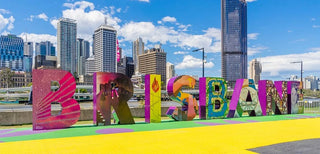If you want to build a granny flat in Brisbane, you will likely have discovered that there are a large number of regulations and rules that you need to follow.
But it might be easier than you think to build a secondary dwelling on your property, without the need for Council approval. Below we’ve listed the key regulations for Brisbane.
Live somewhere else in Queensland? We have similar guides for the Gold Coast, Logan, Sunshine Coast and many other areas in SEQ.
Don’t have a clue keep reading to find out how Compact Homes can help!
While we’re knowledgeable about the development requirements around granny flats and secondary dwellings, we’re not town planners. If you feel like you need planning advice, let us know and we can put you in touch with someone.
Check what zone your property is in.
The Brisbane City Plan sets out the requirements for building granny flats in Brisbane.
To work out if the below applies to your property, you’ll need to check key information about your property on the Brisbane City Plan’s Interactive Map. It’s important to know what zone you are in, any overlays, and whether you are in a Neighborhood Plan area.
Do you need approval for a granny flat?
Most properties in Brisbane will not require Council approval to build a granny flat, provided the property is located in the correct zone and you meet the other requirements set out in the City Plan.
Building a granny flat, known as a Secondary Dwelling, is accepted development in the following zones:
-
Emerging community zone
-
Low density residential zone
-
Low-medium density residential zone
-
Medium density residential zone
-
Character residential zone
-
Environmental management zone
-
Rural zone
-
Rural residential zone
-
Township zone
You can find out what zone your property is with the Brisbane City Plan Interactive Map.
Accepted development does not require Council approval, providing it meets the other requirements set out in the City Plan (more on that below).
You won’t need anything in writing from the Council to start building your granny flat, but you will need to carry out a self-assessment to check you comply with the Dwelling House Code. You’ll also need to self-assess for any other Codes relevant to your property, such as Zone Codes or Neighborhood Plan Codes.
Secondary dwellings are additional dwellings associated with the main house and for use by a single household. If you want to rent the granny flat out, or there will be a different household living in it, you will need to look at the requirements for Dual Occupancy.
Granny flats or secondary dwellings are accepted providing they meet the following requirements. If your planned granny flat doesn’t meet these requirements, you may need to submit a planning application for Council approval.
Size of dwelling allowed
To be considered accepted development, the secondary dwelling can be no more than 80m2 in size.
The new dwelling must be attached to the primary dwelling, or located within 20m of the main house.
Set back of dwellings
A setback is the distance that a building needs to be set back from the street.
For properties with a lot size of over 450m2, or rear lots over 600m2 (excluding the accessway), the required setback is 6m.
For lots smaller than this, the requirements for setbacks are:
-
6m when adjoining houses have a setback of 6m or more
-
The same as the adjoining setback when the neighboring house has a setback of less than 6m (but no less than 3m)
-
3m if there is no adjoining house
Site Coverage
Site coverage refers to the amount of the site that can be covered by buildings.
In Brisbane, this includes the main house, the granny flat, and any other structure attached to the buildings or carports. It doesn’t include gazebos and shade structures.
For small lots (under 450m2, or under 600m2 for a rear lot), the maximum site coverage proportions are:
-
50% for lots 400m2 or more
-
60% for lots between 300-400m2
-
70% for lots 200-300m2
-
80% for lots under 200m2
For larger lots (those over 450m2, or over 600m2 for a rear lot), the maximum site coverage can’t go above 50% of the lot size. For example, if your land is 500m2, the buildings and structures on your land can’t exceed 250m2.
Maximum Height
In the majority of zones where granny flats are accepted development, you can build up to 9.5 meters or two storey.
If you’re in a Medium Density Residential Zone or a Low-medium Density Residential Zone, this increases to 11.5 meters or three storey.
Parking
You’ll need to provide one parking space for the granny flat, and one space for the main house.
My granny flat doesn’t meet these requirements, what should I do?
Don’t worry! You may still be able to build your granny flat, but you’ll likely need Council Approval before you can start building.
I want to rent my granny flat out, what do I need to do?
If you want to rent your granny flat out, you’ll need to meet the requirements for Dual Occupancy.
Any dwelling intended to be used as a self-contained unit must include:
-
Food preparation facilities
-
A bath or shower
-
A toilet and wash basin
-
Clothes washing facilities
Granny flats for dual occupancy are not self-assessable or Accepted Development and you will require Council approval through a planning application.
However, in some zones they are code assessable, meaning they are excepted development. While a planning application is still required, public notification is not and the development should be assessed only against the relevant codes.
Dual occupancy applications are code assessable in these situations:
Medium density residential zone
Providing the house is no higher than five storeys, or the number of storeys or building height set out in the relevant neighborhood plan.
Remember that you can find out what zone your property is in, and whether there is a neighborhood plan in place at the Brisbane City Plan Interactive Map.
Your application will need to comply with the Dual Occupancy Code, the Medium Density Residential Zone Code, and any other codes relevant to your site.
Low-medium density residential zone
This zone is split into three ‘precincts’, each allowing different height developments between 2 and 3 storeys.
Any applications should comply with the Dual Occupancy Code, Low-medium Density Residential Zone Code, and any other Codes relevant to your property.
Character residential zones
Some dual occupancy applications are code assessable in this zone, providing it falls within the infill housing zone precinct.
The development should also:
-
Not result in the removal of any house constructed in 1946 or earlier
-
Be no greater than 2 storey and 9.5m in height
-
Comply with the relevant codes, including the Dual Occupancy Code and the Character Residential Zone Code.
I don’t meet these requirements, what should I do?
You will need to lodge a planning application and it will need to go through a full planning process, including public notification. This is usually referred to as an impact accessible development application, but we recommend you speak to a planning professional.
For most people looking to build a granny flat in Brisbane, the development will be self-assessable, as long as you are planning to use it as an extra dwelling for your household. If you’re looking to rent out your granny flat, you’ll need to comply with the Dual Occupancy requirements which will require a planning application.
How can Compact Homes Help?
Compact Homes is an Australian Kit home company that specialises in secondary dwellings, granny flats and luxury cabins. If you are not sure of what you can do with your property book a 10min call and we will do an initial analysis of your property and work out suitability, size of ideal dwelling and answer any other questions you may have. To book a 10 min call go here!
Also have a good look through our homes to make sure you Love the styles and floor plans we have. Go Here!


